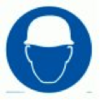BSC Health & Safety Flashcards
What is a hazard?
The potential to cause harm
What is a risk?
The likelihood harm will be caused
E.g. high/medium/low risk
What is the best way to control a hazard?
To eliminate it (or remove it)
What are the most common causes of accidents in the workplace?
Slips, trips and falls
What should you do if you have an accident at work?
Tell the health and safety representative who logs it, so it can be investigated
What is the purpose of a risk assessment?
To identify the control measures
Give an example of a control measure used in a lab e.g. for handling dilute acids
Wearing goggles or lab coats
What is the point of a control measure?
To remove or reduce risks
Who enforces Health & Safety at work?
The health & safety executive (HSE)
How can the risk of injury at work be reduced?
Behave properly
Use equipment properly
Use protective and safety equipment
Follow procedures e.g. lab rules
Give an example of ‘behaving properly’ in the lab
No running, no eating or drinking
What does PPE stand for?
Personal protective equipment
Give an example of PPE on a building site
Hard hats, steel capped boots, gloves etc…
What can cause accidents at work?
Human factors like carelessness & tiredness
What occupational factor may contribute to work place accidents?
Manual handling e.g. lifting loads that are too heavy
How can a machine cause injury?
By entrapment, entanglement and ejection
Who is responsible for providing health & safety information at work?
Employers
What could happen if serious health & safety regulations are not followed properly at work?
Employers could end up in court
What does this mean?

Oxidising – may or may not burn itself, but will release O2 contributing to combustion
What does this mean?

Toxic – can cause death by being swallowed, breathed in or absorbed by skin









